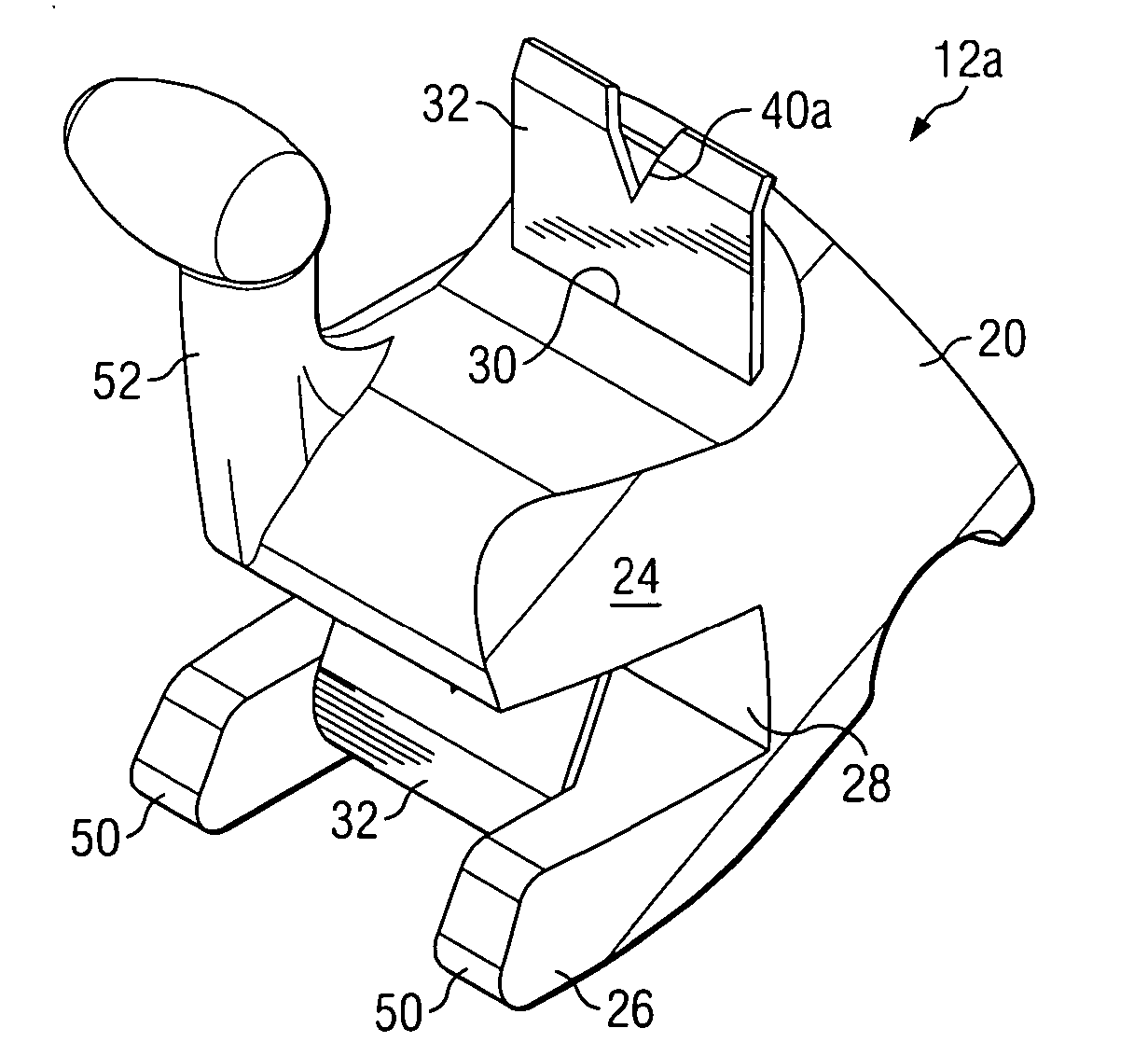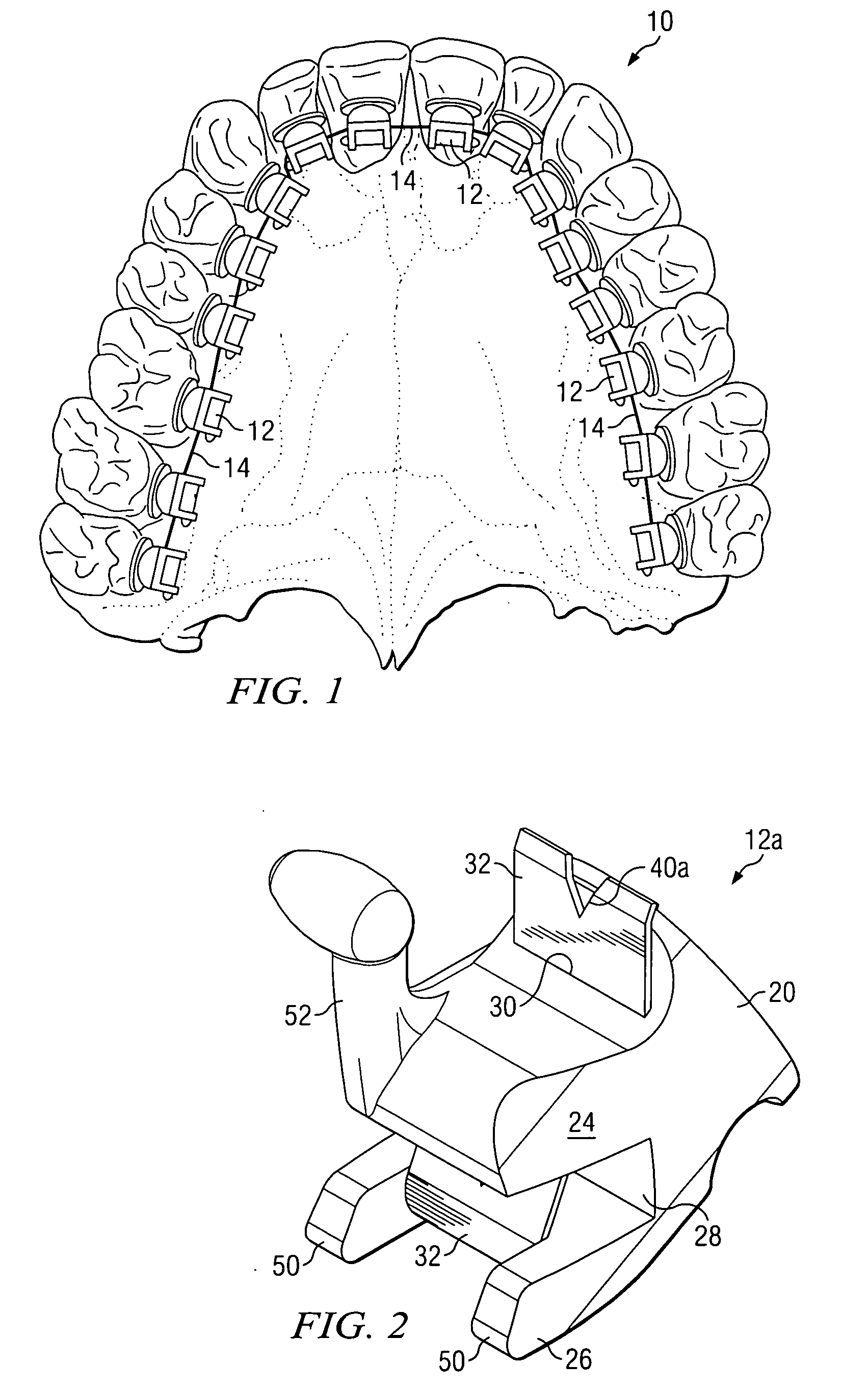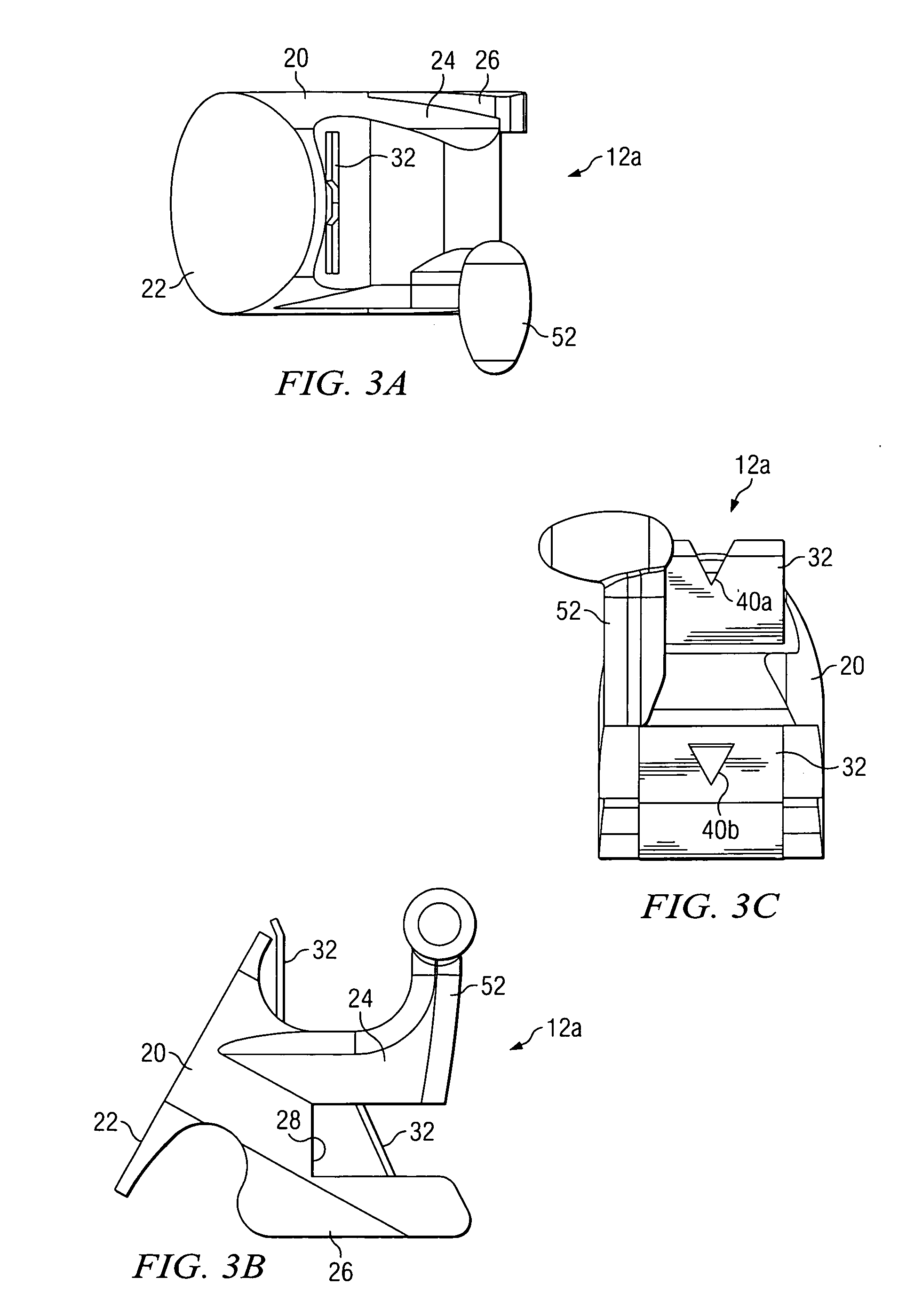Self-ligating lingual orthodontic bracket
- Summary
- Abstract
- Description
- Claims
- Application Information
AI Technical Summary
Benefits of technology
Problems solved by technology
Method used
Image
Examples
Embodiment Construction
[0026]FIG. 1 illustrates a bottom view of a person's upper arch 10 with example self-ligating lingual orthodontic brackets 12 affixed to the upper teeth. For example, brackets 12 may be affixed to the upper teeth using a conventional indirect bonding technique or in any other suitable manner. Although upper arch 10 is illustrated with substantially identical brackets 12 affixed to all of the upper teeth, brackets 12 may be affixed to any two or more of the upper teeth, brackets 12 may be affixed to any two or more of lower teeth instead or in addition to two or more of the upper teeth, and a bracket 12 affixed to a tooth may be the same as or different than a bracket 12 affixed to another tooth in configuration, size, or both. As one example, brackets 12 affixed to central teeth may be different in both configuration and size than brackets 12 affixed to cuspids, bicuspids, or molars. As another example, a bracket 12 affixed to an upper tooth may be larger than a bracket 12 affixed t...
PUM
 Login to View More
Login to View More Abstract
Description
Claims
Application Information
 Login to View More
Login to View More - R&D
- Intellectual Property
- Life Sciences
- Materials
- Tech Scout
- Unparalleled Data Quality
- Higher Quality Content
- 60% Fewer Hallucinations
Browse by: Latest US Patents, China's latest patents, Technical Efficacy Thesaurus, Application Domain, Technology Topic, Popular Technical Reports.
© 2025 PatSnap. All rights reserved.Legal|Privacy policy|Modern Slavery Act Transparency Statement|Sitemap|About US| Contact US: help@patsnap.com



